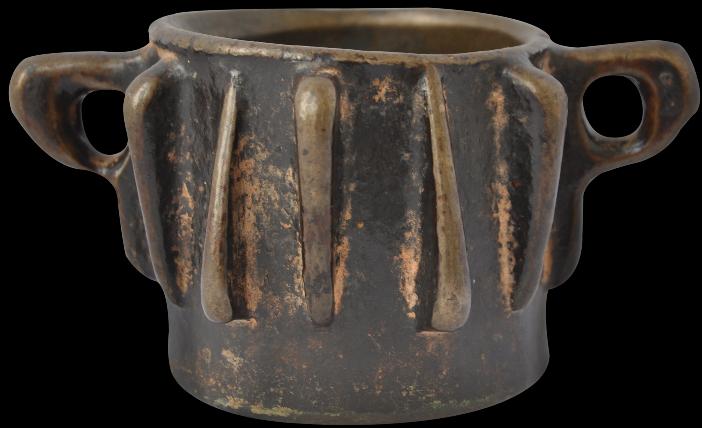
Andalusian Islamic Mortar
Hispano-Moresque Bronze Mortar
Andalusian Spain
circa 13th-14th century
height: 8.5cm, width across handles: 15.7cm, weight: 1877g
This mortar, of circular form and with a cast rimless, cylindrical body, has two prominent handles on either side with holes either for suspension or for securing the mortar while in use. The mortar is decorated with ten sculptural triangular flanges alternatively tapering upward and downward, in addition to the handles. These flanges whilst giving the mortar much of its decorative appeal acted to reinforce the mortar’s body.
Mortars of this type have their origins in twelfth century Moorish Spain, and possibly earlier (one in Cordoba’s Archaeological Museum is attributed to the tenth century.) Two very similar examples in the Khalili Collection are illustrated in Maddison & Savage-Smith (1997, p. 299). These are ascribed with a circa 13th-14th century dating.
A 12th-13th century example is in the collection of the Instute du Monde Arabe in Paris (see Instute du Monde Arabe, 2005, p. 185 for an illustration.) Another example forms lot 161 at Christie’s London ‘Art of the Islamic and Indian Worlds including Art from the Collection of Dr Mohammed Said Farsi’, October 5, 2010.
A later mortar comparable with the example here and also with prominent fins but without the alternating pattern of this example comprised lot 165 in Etude Tajan’s 1995 catalogue. Another but lesser example appeared as lot 318 in Christie’s South Kensington ‘Indian and Islamic Works of Art and Textiles’, April 11, 2008.
Such mortars were made in Spain and exported to other Mediterranean communities. They are of extremely thick cast metal so as to allow the repeated blows of a heavy pestle. But even so, this example has worn through in the base and now has an old repair, which itself shows considerable wear. Mortars such as this example often were used for grinding herbs and other ingredients for the preparation of drugs and balms.
Overall, this is a fine early example, decorative and of good size. As might be expected, it is heavy for its size. It has a splendid deep colour and pleasingly rounded contours from centuries of handling and use.
References
Etude Tajan, ‘Art Islamiqie: Tableaux Orientalistes’, Paris, June 5, 1995.
Maddison F. & E. Savage-Smith, Science, Tools & Magic: The Nasser D. Khilili Collection of Islamic Art, The Nour Foundation, 1997.
L’Age d’Or des Sciences Arabes (Exposition Presentee a l’Institut du Monde Arabe, Paris, 25 October 2005-19 March 2006), Instute du Monde Arabe, 2005.Christie’s South Kensington ‘Indian and Islamic Works of Art and Textiles’, April 11, 2008.
Christie’s London ‘Art of the Islamic and Indian Worlds including Art from the Collection of Dr Mohammed Said Farsi’, October 5, 2010.
Inventory no.: 1076
SOLD
to see another example.

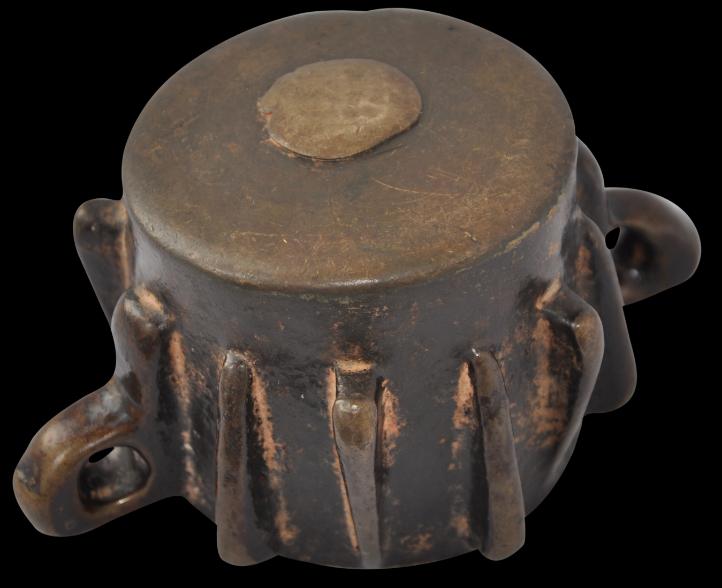
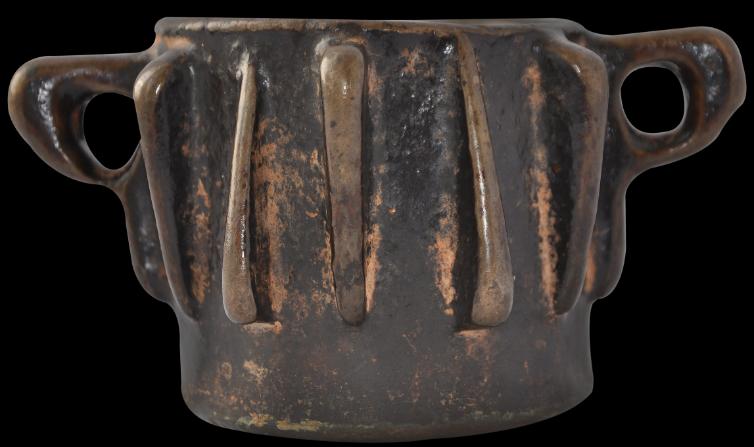
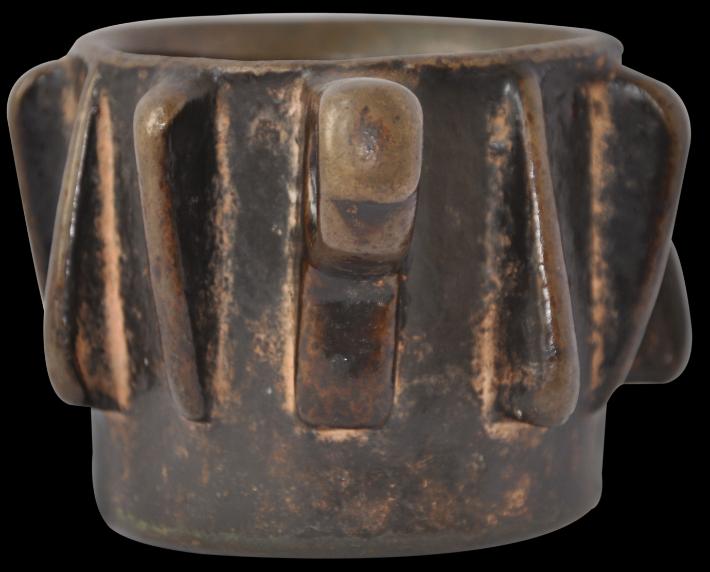
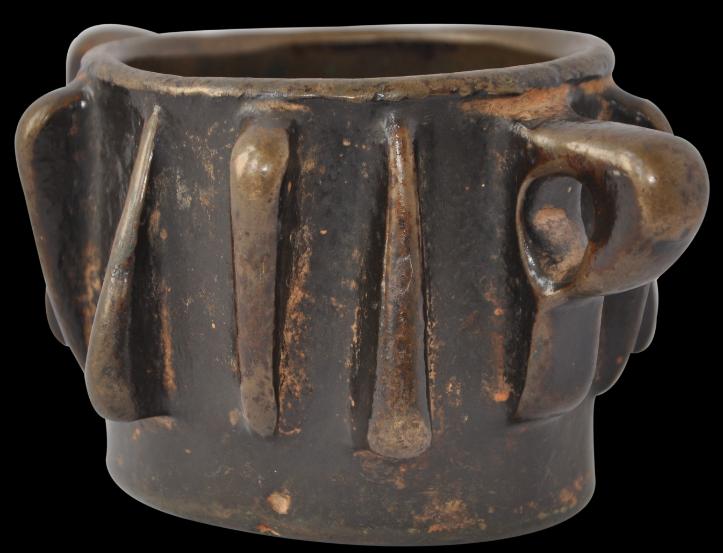
View of the base showing the old repair.
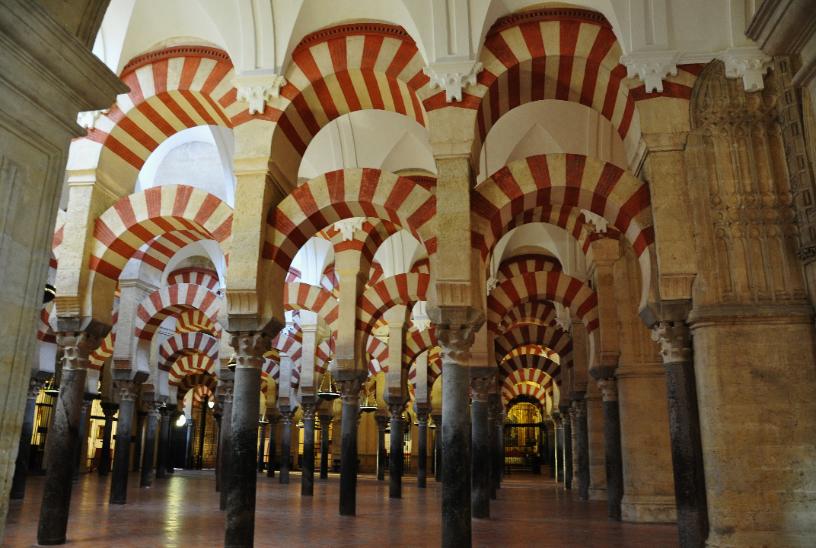
The interior of the eighth century Great Mosque in Cordoba, Spain.
(Photographed in October 2011.)
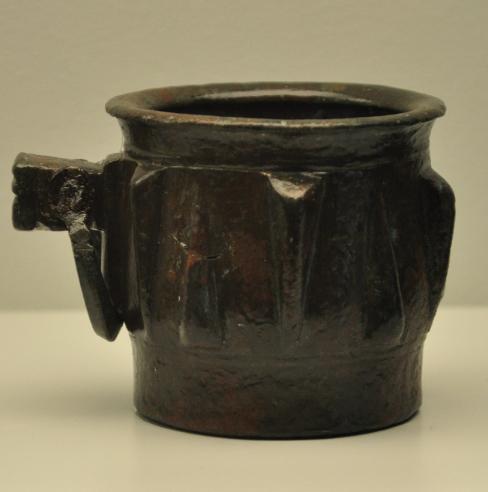
A related bronze mortar in Cordoba’s Archaeological Museum, attributed to tenth century Cordoba.
(Photographed in October 2011.)

